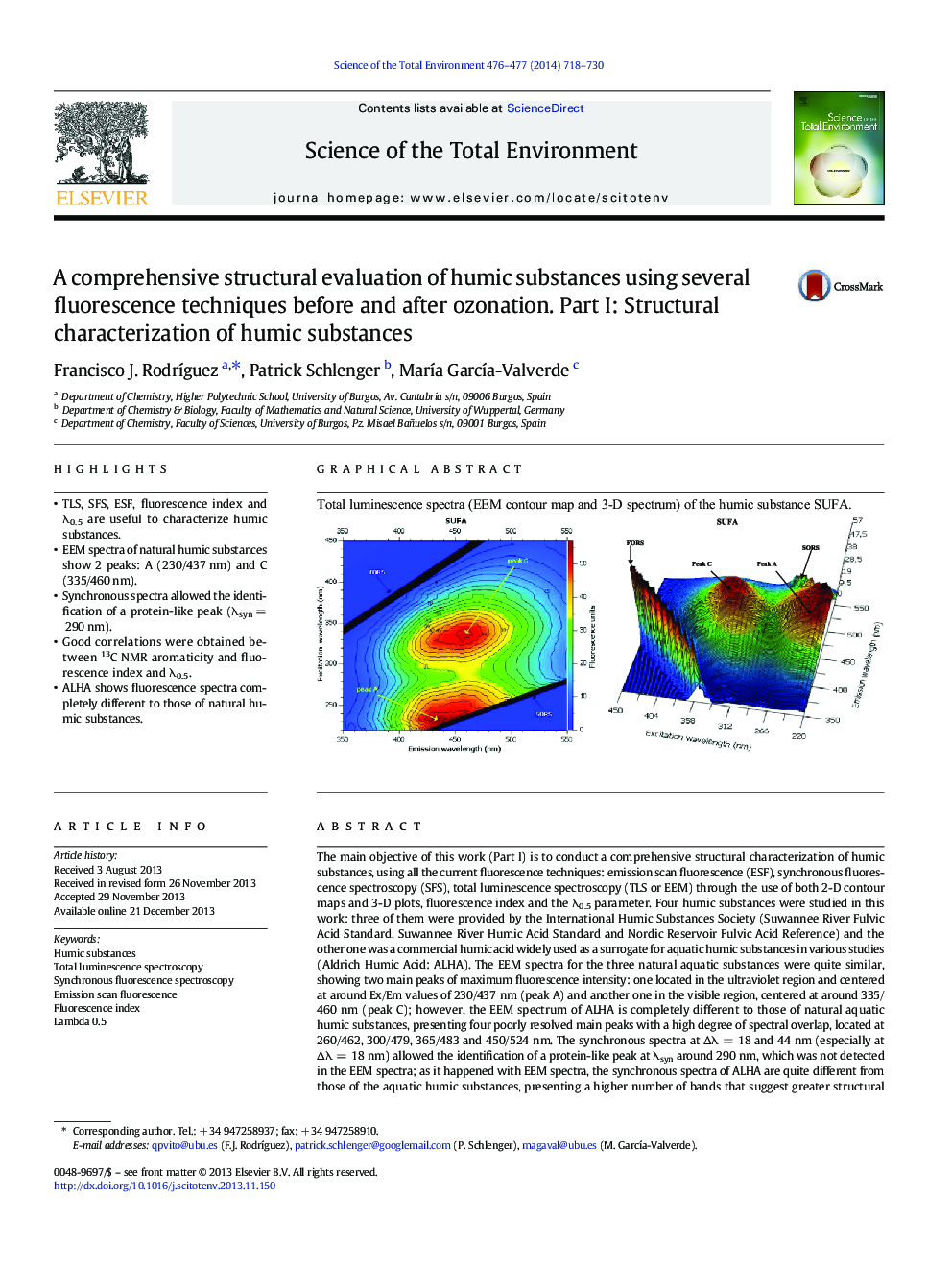| کد مقاله | کد نشریه | سال انتشار | مقاله انگلیسی | نسخه تمام متن |
|---|---|---|---|---|
| 4428586 | 1619789 | 2014 | 13 صفحه PDF | دانلود رایگان |
• TLS, SFS, ESF, fluorescence index and λ0.5 are useful to characterize humic substances.
• EEM spectra of natural humic substances show 2 peaks: A (230/437 nm) and C (335/460 nm).
• Synchronous spectra allowed the identification of a protein-like peak (λsyn = 290 nm).
• Good correlations were obtained between 13C NMR aromaticity and fluorescence index and λ0.5.
• ALHA shows fluorescence spectra completely different to those of natural humic substances.
The main objective of this work (Part I) is to conduct a comprehensive structural characterization of humic substances, using all the current fluorescence techniques: emission scan fluorescence (ESF), synchronous fluorescence spectroscopy (SFS), total luminescence spectroscopy (TLS or EEM) through the use of both 2-D contour maps and 3-D plots, fluorescence index and the λ0.5 parameter. Four humic substances were studied in this work: three of them were provided by the International Humic Substances Society (Suwannee River Fulvic Acid Standard, Suwannee River Humic Acid Standard and Nordic Reservoir Fulvic Acid Reference) and the other one was a commercial humic acid widely used as a surrogate for aquatic humic substances in various studies (Aldrich Humic Acid: ALHA). The EEM spectra for the three natural aquatic substances were quite similar, showing two main peaks of maximum fluorescence intensity: one located in the ultraviolet region and centered at around Ex/Em values of 230/437 nm (peak A) and another one in the visible region, centered at around 335/460 nm (peak C); however, the EEM spectrum of ALHA is completely different to those of natural aquatic humic substances, presenting four poorly resolved main peaks with a high degree of spectral overlap, located at 260/462, 300/479, 365/483 and 450/524 nm. The synchronous spectra at Δλ = 18 and 44 nm (especially at Δλ = 18 nm) allowed the identification of a protein-like peak at λsyn around 290 nm, which was not detected in the EEM spectra; as it happened with EEM spectra, the synchronous spectra of ALHA are quite different from those of the aquatic humic substances, presenting a higher number of bands that suggest greater structural complexity and a higher degree of polydispersity. Good correlations were achieved between 13C NMR aromaticity and both fluorescence index and λ0.5 parameter. The different spectra presented by ALHA compared to those shown by the natural aquatic humic substances for all the fluorescence techniques studied suggest an important structural difference between them, which cast doubt on the use of commercial humic acids as surrogates for natural humic substances.
Total luminescence spectra (EEM contour map and 3-D spectrum) of the humic substance SUFA.Figure optionsDownload as PowerPoint slide
Journal: Science of The Total Environment - Volumes 476–477, 1 April 2014, Pages 718–730
